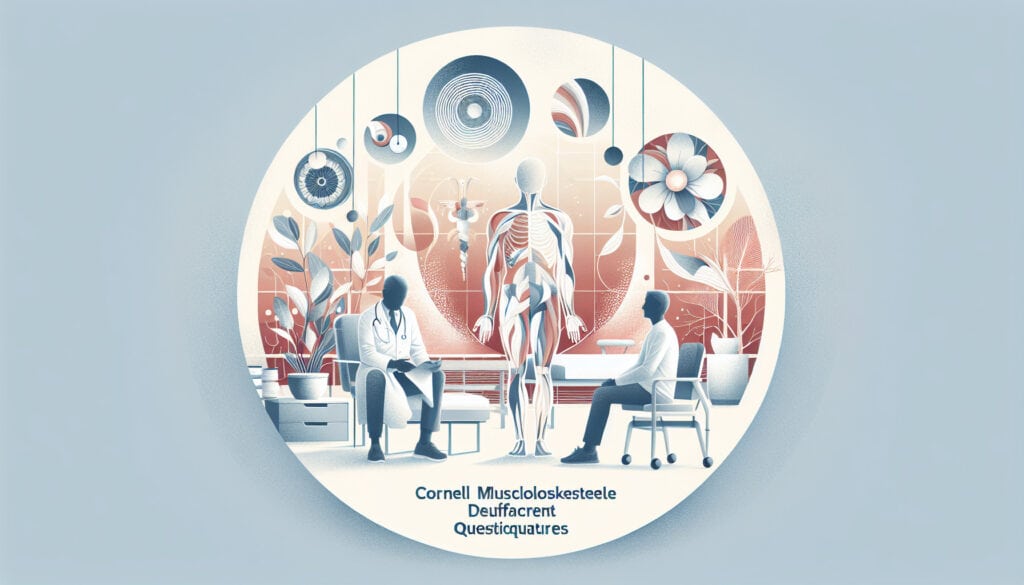Outil d'enquête auto-administré utilisé pour recueillir des données sur la localisation, la fréquence et la gravité de la gêne musculo-squelettique ressentie par les individus.
- Méthodologies : Clients et marketing, Idéation, Conception de Produits
Questionnaires de Cornell sur l'inconfort musculo-squelettique

Questionnaires de Cornell sur l'inconfort musculo-squelettique
- Ergonomie, Sciences de la santé, Facteurs humains, Ingénierie des facteurs humains (HFE), Amélioration des processus, Contrôle de qualité, Gestion de la qualité, Gestion des risques, Safety
Objectif :
Comment il est utilisé :
- Les employés ou les participants à l'étude reçoivent un diagramme du corps humain et sont invités à ombrer les zones d'inconfort et à en évaluer la gravité et la fréquence. Cette méthode est largement utilisée dans le cadre de la surveillance et de la recherche en matière d'ergonomie.
Avantages
- Facile et peu coûteux à administrer à de grands groupes, il fournit des données standardisées permettant de suivre les tendances au fil du temps et contribue à l'identification précoce des problèmes musculo-squelettiques potentiels.
Inconvénients
- Les données sont subjectives et reposent sur l'auto-déclaration ; elles n'identifient pas la cause de la gêne et leur fiabilité dépend de la mémoire et de l'interprétation du participant.
Catégories :
- Ergonomie, Ressources humaines, Gestion des risques
Idéal pour :
- Dépistage des symptômes musculo-squelettiques au sein d'une main-d'œuvre afin d'identifier les emplois ou les services à haut risque.
Le Cornell Musculoskeletal Discomfort Questionnaires (CMDQ) peut être utilisé efficacement dans divers contextes tels que la fabrication, les soins de santé, les environnements de bureau et la construction, où les risques ergonomiques sont prévalents. Au cours des phases de planification ou d'évaluation de la conception du lieu de travail ou de l'analyse des tâches, les ergonomes et les professionnels de la sécurité peuvent utiliser le CMDQ pour évaluer les niveaux d'inconfort des employés, ce qui permet d'identifier les rôles professionnels spécifiques ou les départements qui peuvent nécessiter une intervention ergonomique. Il s'agit d'un outil de dépistage préliminaire avant de mettre en œuvre des évaluations ou des interventions ergonomiques approfondies, ce qui permet de conserver les ressources tout en fournissant des données exploitables. Les participants idéaux pour cette méthodologie comprennent un échantillon représentatif de la main-d'œuvre, englobant différents rôles et niveaux d'expérience, afin de garantir l'enregistrement d'une exposition variée aux risques ergonomiques. Au fur et à mesure que les équipes collectent des données, les entreprises peuvent suivre les tendances en matière d'inconfort et apporter des améliorations ergonomiques de manière proactive, ce qui permet d'améliorer le bien-être des employés et de réduire potentiellement les demandes d'indemnisation des travailleurs. La facilité d'administration du CMDQ permet aux entreprises de mener des enquêtes de routine, favorisant ainsi une culture de la sécurité et de la santé qui engage les employés dans leur propre prise de conscience ergonomique et encourage le retour d'informations sur les conditions du lieu de travail. Dans le monde universitaire, le CMDQ peut être utilisé dans des études de recherche visant à comprendre les impacts ergonomiques de diverses interventions sur le lieu de travail, contribuant ainsi à une base de connaissances plus large qui informe les meilleures pratiques dans tous les secteurs d'activité.
Principales étapes de cette méthodologie
- Distribuez aux participants le questionnaire de Cornell sur l'inconfort musculo-squelettique.
- Demandez aux participants d'ombrer les zones du schéma corporel où ils se sentent mal à l'aise.
- Demandez aux participants d'évaluer la gravité de leur gêne sur une échelle prédéfinie.
- Demandez aux participants d'indiquer la fréquence des épisodes de malaise.
- Compiler les données de tous les participants en vue de leur analyse.
- Identifier les modèles de malaise entre les emplois ou les départements.
- Analyser les données pour mettre en évidence les zones à haut risque pour les problèmes musculo-squelettiques.
- Comparer les résultats avec les données de base ou les évaluations précédentes.
Conseils de pro
- Intégrer des entretiens qualitatifs de suivi pour compléter les données du questionnaire, en permettant aux participants d'apporter des précisions sur leur malaise.
- Procéder à des réévaluations périodiques à l'aide du questionnaire afin de suivre l'évolution de la gêne et de valider les interventions ergonomiques.
- Utiliser les données agrégées de plusieurs départements pour se comparer aux normes industrielles et identifier les meilleures pratiques en matière d'amélioration de l'ergonomie.
Lire et comparer plusieurs méthodologies, nous recommandons le
> Référentiel méthodologique étendu <
ainsi que plus de 400 autres méthodologies.
Vos commentaires sur cette méthodologie ou des informations supplémentaires sont les bienvenus sur le site web de la Commission européenne. section des commentaires ci-dessous ↓ , ainsi que toute idée ou lien en rapport avec l'ingénierie.
Contexte historique
1986
(si la date est inconnue ou n'est pas pertinente, par exemple "mécanique des fluides", une estimation arrondie de son émergence notable est fournie)

Articles Similaires
Calculateur de METS en calories
Méta-analyse
Cartographie des messages
Diagrammes du modèle mental
Forces de poussée et de traction maximales acceptables
Planification des besoins en matériaux (MRP)